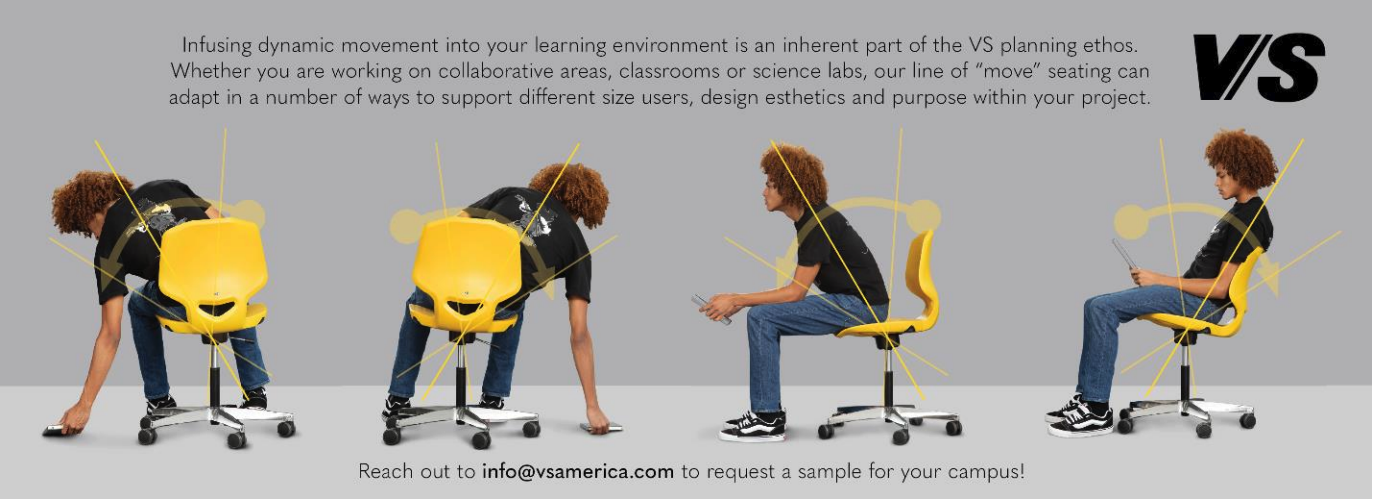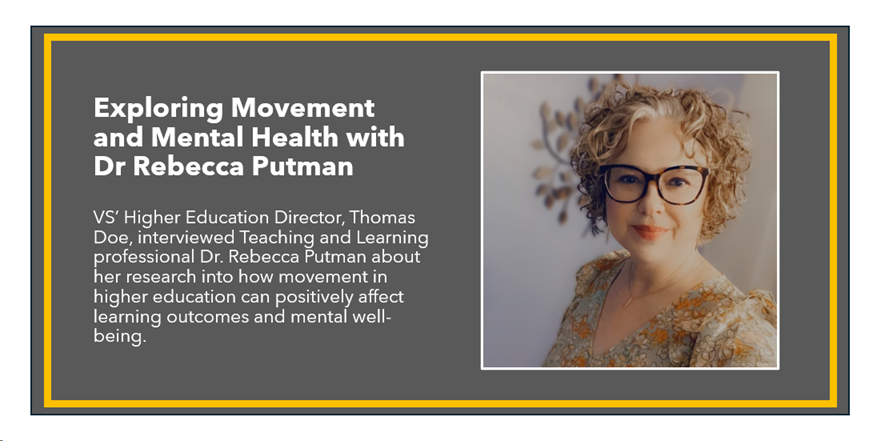1. Tell me about what keeps you motivated in the scholarship of teaching and learning.
Teaching has been described as both an art and a science. While teaching is an art, studying the impact of your teaching is a science. Part of the science of teaching is reflecting and making decisions about what worked and what did not work based on observation and data. Good teachers ask questions about their teaching, students, and outcomes. Without empirical evidence, I cannot be sure that anything I’m doing in the classroom is effective. The scholarship of teaching and learning encourages innovation and allows me to systematically examine and study new ways of teaching and learning. In this case, I am studying the impact of flexible seating and movement in the higher education classroom. It’s exciting to try new things in the classroom (and beyond). My motivation has always been finding innovative ways that will help all students learn and be successful, whether they are in kindergarten or graduate school.
2. You have done some great work exploring how the body can support the brain in the classroom. What drove you to start looking into movement as a catalyst for student success?
I have many years of experience in K-12 classrooms. My teaching style is active and collaborative which means that there is naturally a lot of movement in my classrooms. When I came to higher education, I struggled to adapt my teaching style in rooms where the desks were in rows and students could not easily move. I had to be creative in encouraging movement and collaboration among my college students. As a teacher educator, I am in and out of K-12 classrooms regularly, and I started noticing more and more flexible seating. After observing how younger students and their teachers used the seating, I wondered if the benefits of flexible seating extended to adults. My gut instinct told me that the benefits should be generalized to my college students. After all, isn’t movement good for all brains, regardless of age? However, when I looked for research to support the use of flexible seating in higher education, there were very few, if any, scholarly studies on the topic. I saw this gap in the research as an opportunity to conduct an exciting study that has the potential to transform the way that we think about classroom design in higher education. I applied for a small grant through my university to buy flexible seating for two classrooms so that I could begin to better understand the impact that movement has on college students. While my research was delayed by the pandemic, data collection began as soon as students returned to campus in the fall of 2021 and has led to several other studies.
3. In your white paper you explored a number of different demographics. What did you find most interesting?
While our sample size was small, the data uncovered several interesting trends related to the use and benefits of flexible seating in the higher education classroom that need to be examined further. Among the more interesting findings related to use of the seating in our study: • Male students (75%) were more likely to use the seating than female students (60%). • Hispanic students were much more likely than white students or other races to use the seating. Eighty-one percent of the Hispanic students regularly used the seating, while only 50% of the white students and 33% of students of other races regularly used the seating. • Student age did not appear to influence use of the seating. • Eighty percent of students with dyslexia and 86% of students with ADHD used the seating. • Eighty percent of students with generalized anxiety disorder used the flexible seating; however, only 55% of students with anxiety and depression used the seating. Interestingly, across all demographics, 87% of the participants who used the flexible seating said that their ability to concentrate and pay attention was better than when they attended class in traditional classroom. When we looked more specifically at the benefits of the flexible seating for participants with mental health challenges, we found that students who did not regularly sit in the flexible seating reported a statistically significant difference in feeling isolated in the class compared to those who regularly used the seating. Many of these findings were further supported by our qualitative data, including students who shared, “If I was feeling tired or anxious, I wanted a seat that could move.” and “[The seating] really helped my ADHD, and I was able to focus.” Additional research is needed to confirm these findings, but the initial data suggests that much of the research on flexible seating related to physical benefits, attention, and engagement done previously with elementary student populations may generalize to students in the higher education classroom and meet the needs of an increasingly diverse population.
4. What is next for your research into truly active learning environments?
We want to expand our study to focus more on the specific benefits of movement in the higher education classroom beyond just flexible seating. Our goal in collaborating with VS Furniture includes identifying elements that can help designers create the next generation of higher education learning environments and focus on future-ready classrooms that better meet the needs of all students. Specifically, we want to measure students’ movement and interactions as well as their perceptions of comfort, engagement, well-being, achievement, motivation, sense of community, and success in a traditional classroom and compare them to the same variables in an active classroom that encourages movement and flexibility. I am working with a cross-disciplinary team that includes experts in the areas of teaching and learning, mental health and well-being, classroom design, and physical movement. Our team brings a wealth of knowledge and expertise as well as diverse perspectives that are valuable in making sure that our research considers movement from a variety of lenses.
5. What kind of impact would you like to see your research have on the learning and architectural design community?
While many K-12 schools have embraced the idea of active learning environments and movement in the classroom, higher education administrators and planning teams have been a little slower to adopt more progressive classroom designs that are flexible and encourage movement. In many college classrooms, there are still fixed desks and tables in rows with the instructor positioned at the front of the room. Changes in student expectations and attitudes combined with research on the positive relationship between active engagement and student learning have many college administrators and planners in higher education reconsidering classroom design. There is very little empirical research on the use of flexible seating and furniture in the higher education classroom, so my hope is that our study draws attention to an emerging line of research that suggests that the benefits of movement extend to adults in the college classroom. While all students benefit from a more flexible design, movement appears to be particularly beneficial for college students with mental health challenges and disabilities. A more flexible design, including furniture from VS, is one element of classroom design that can adapt to the increasing diversity on college campuses and enhance the learning experience for all students, regardless of their backgrounds and educational objectives.

Connect with VS America:
Web: https://www.vsamerica.com
Email: info@vsamerica.com
LinkedIn: https://www.linkedin.com/company/vsamericainc/
X (Formerly Twitter): https://twitter.com/vsamerica







